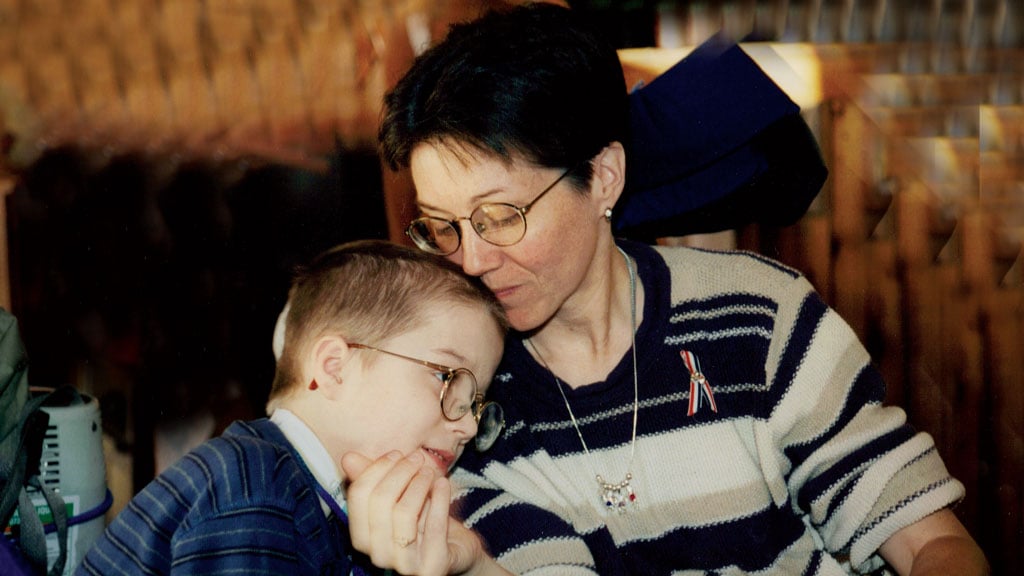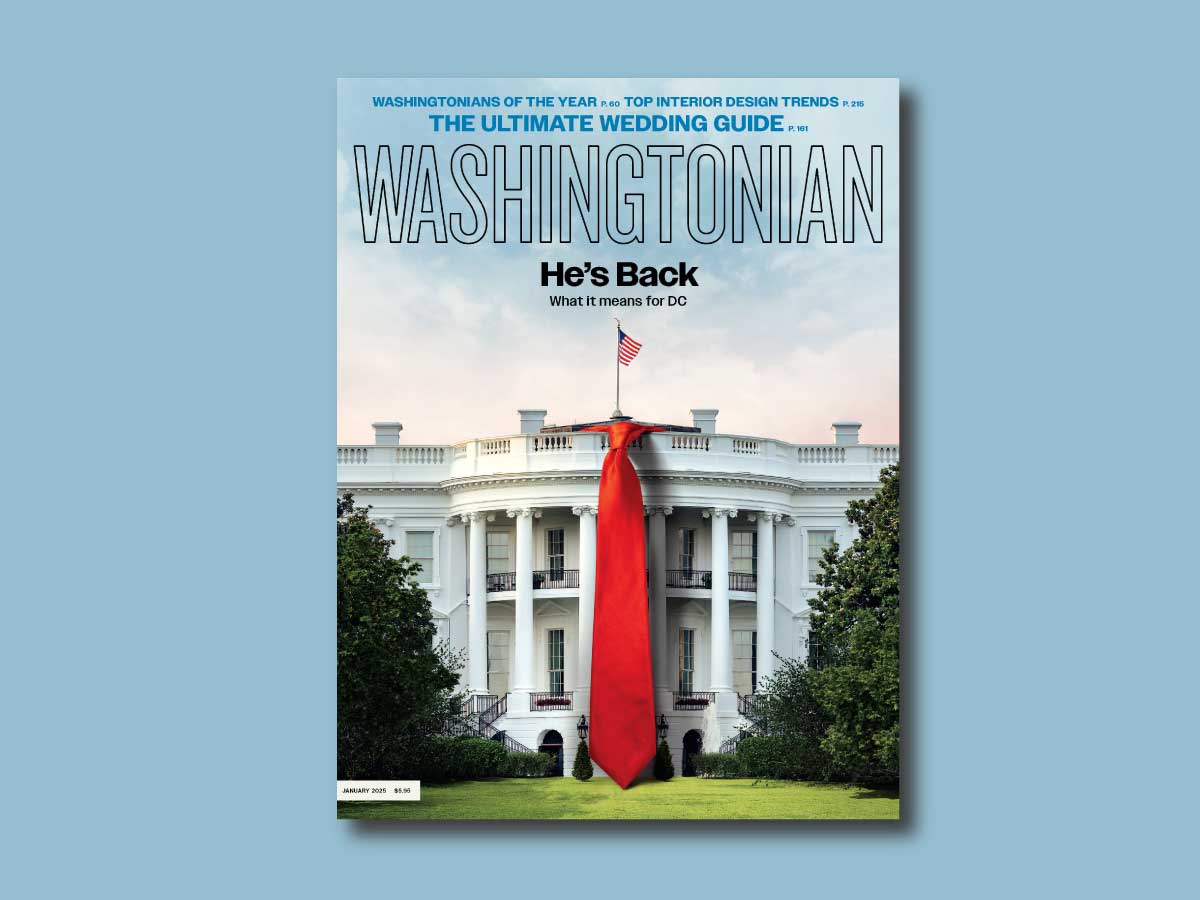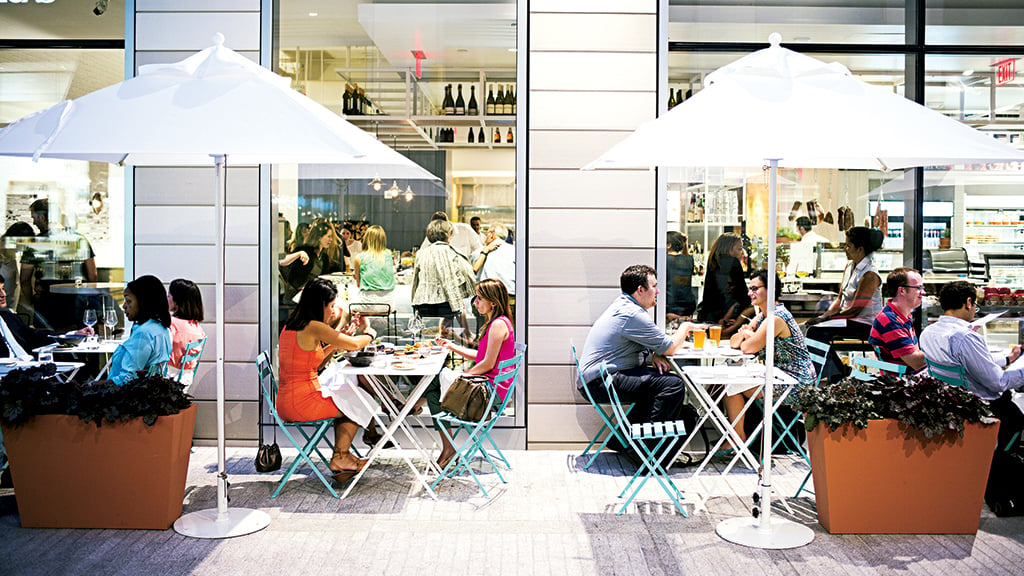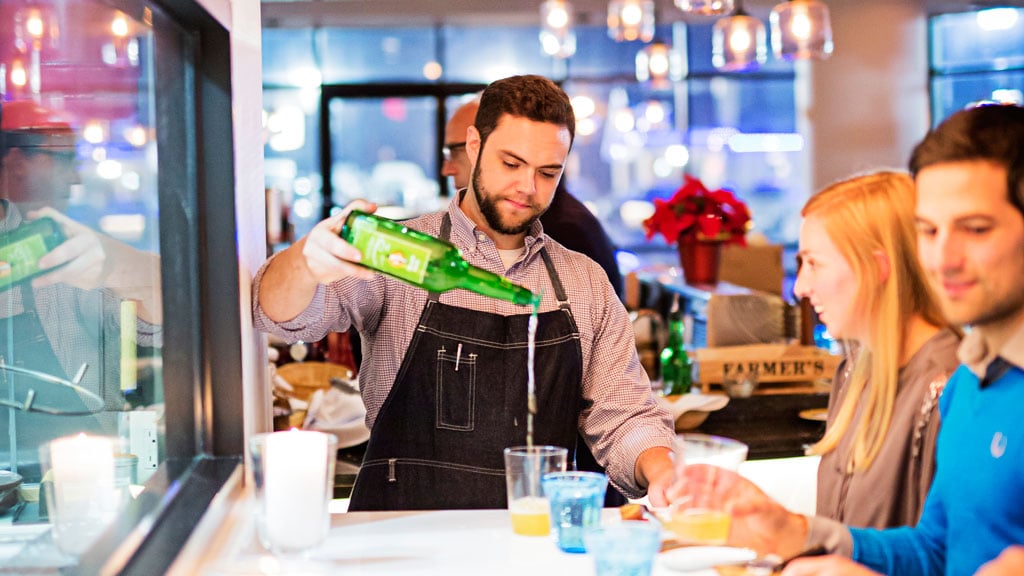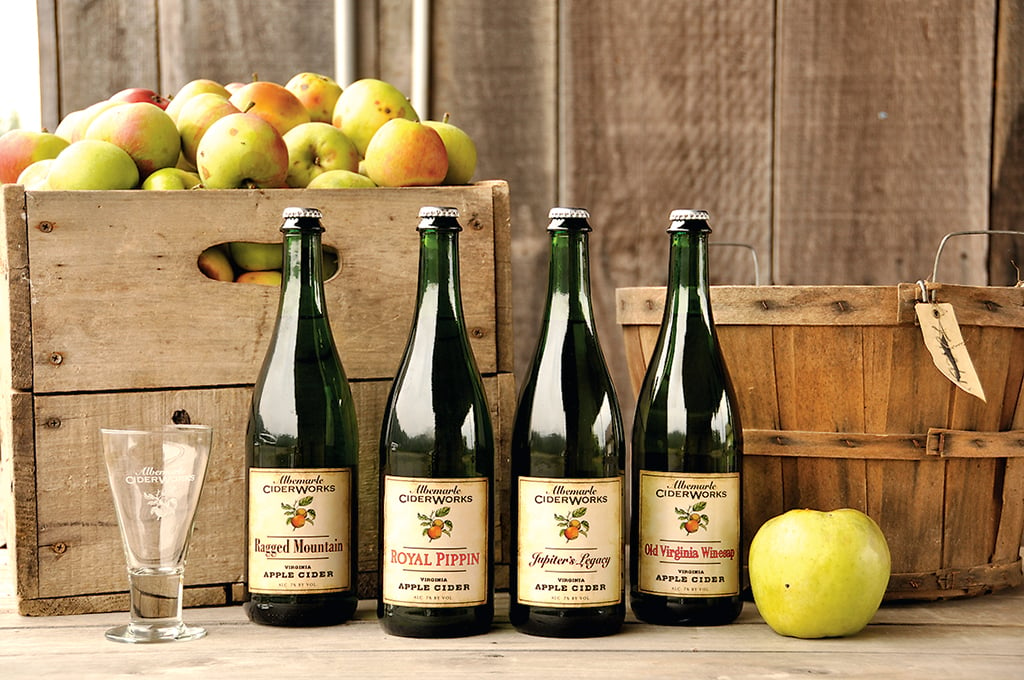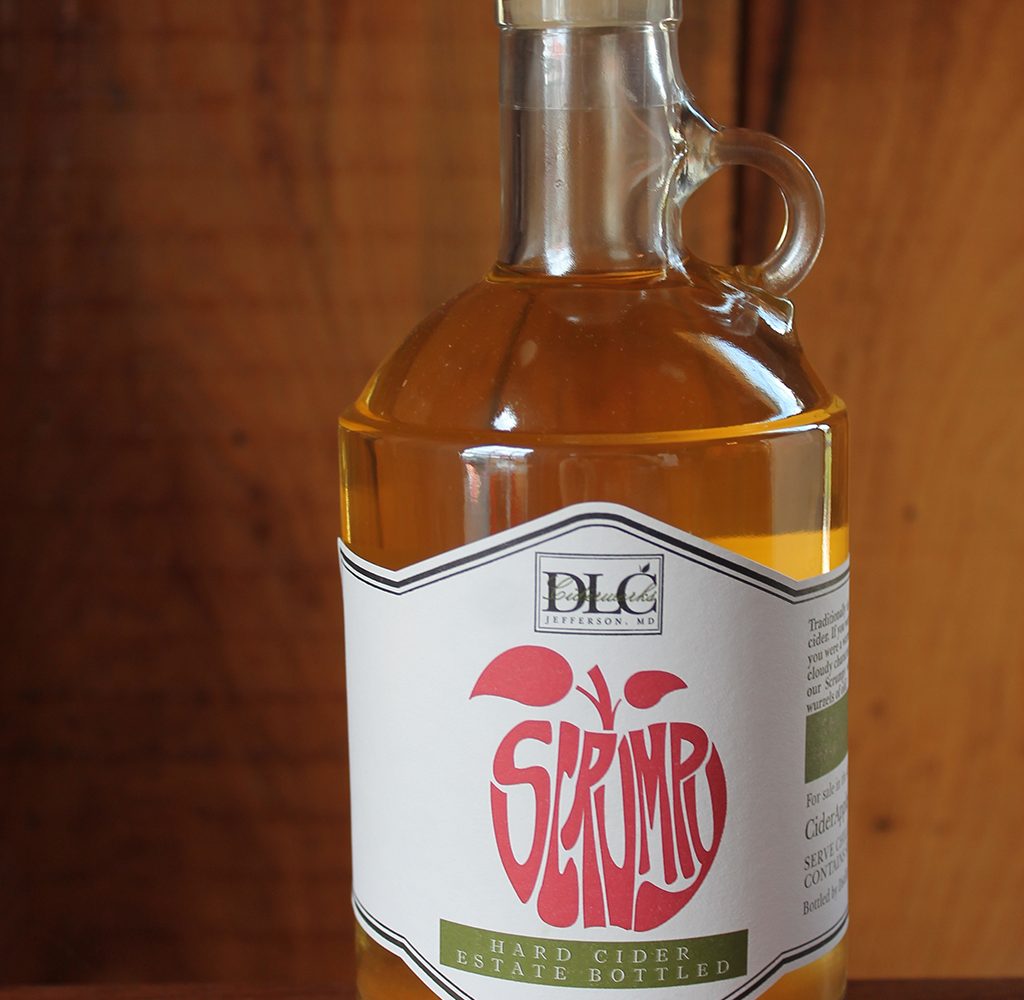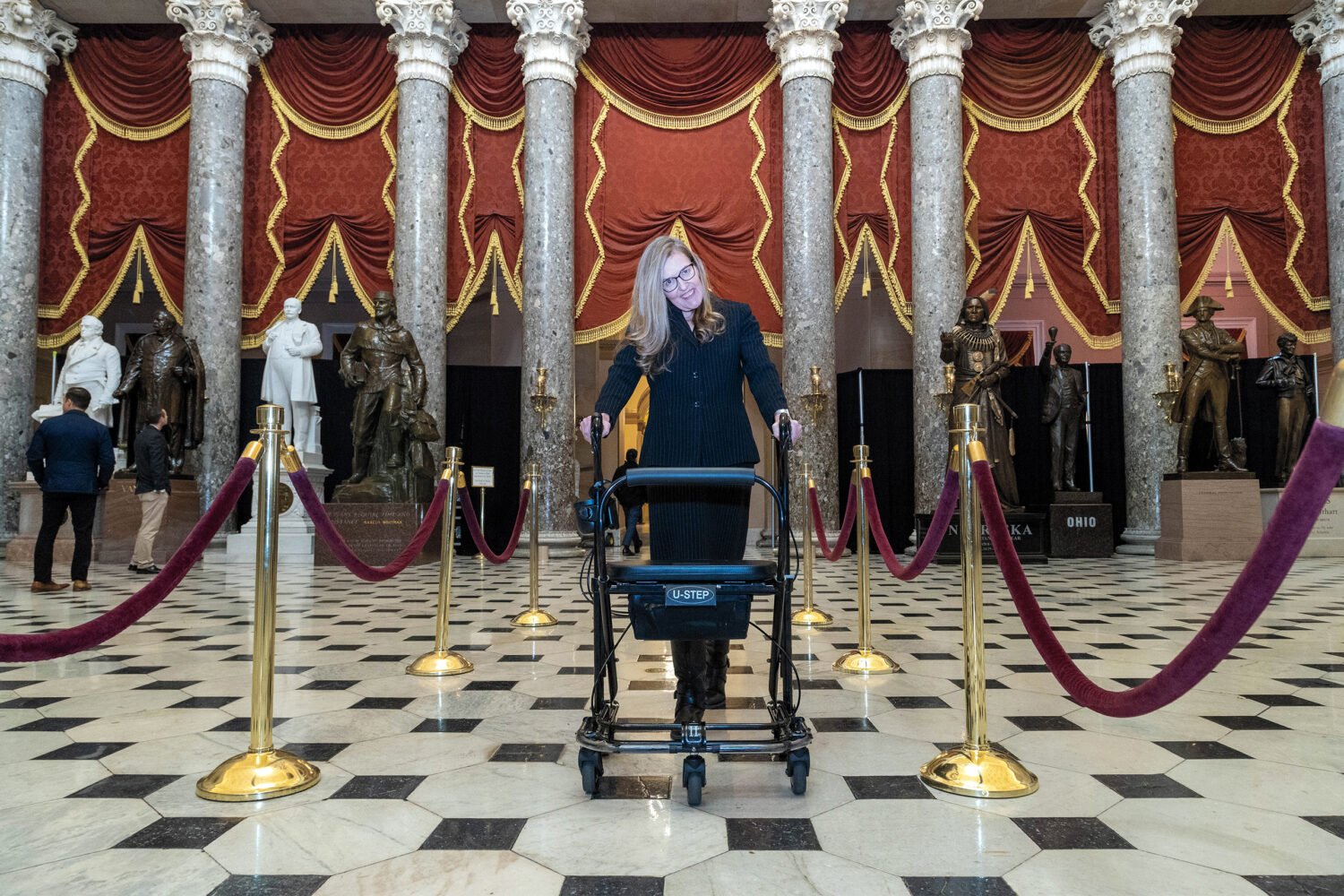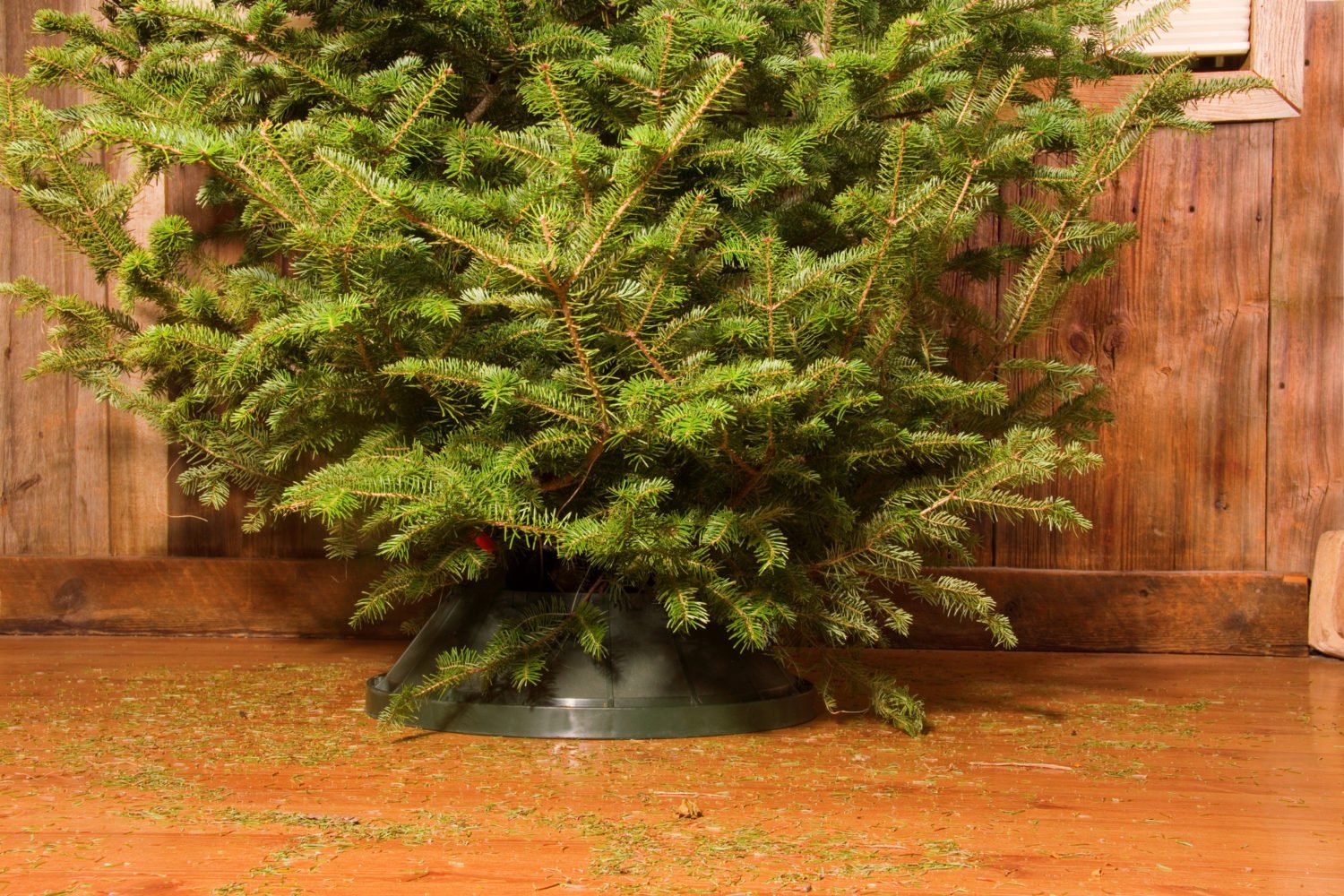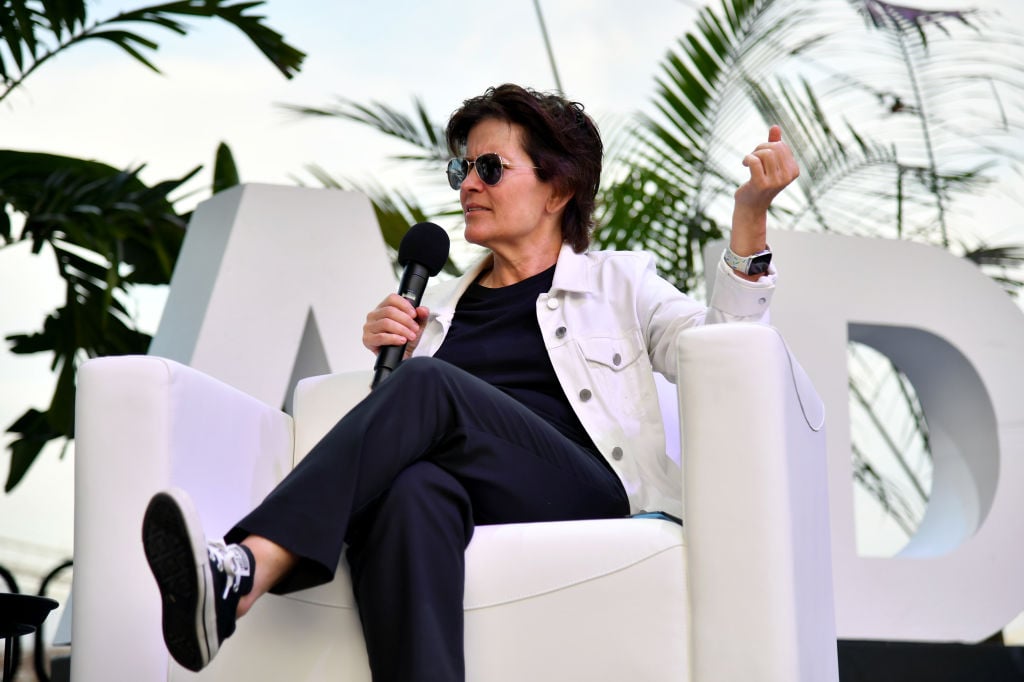Searching for the Very Best Crabcakes
"Is there any one food belonging especially to Washington?" we wanted to know. Mary Turner said, "Yes, the blue crab of the Chesapeake."
So wrote Clementine Paddleford in How America Eats, a cookbook and travelogue that provides insight into this country's dining tastes in the middle of the 20th century. Paddleford, who was food editor for the New York Herald Tribune, was interviewing the director of the Home Service Bureau of the Potomac Electric Power Company, a home economist who oversaw cooking classes for the utility's customers. It is interesting that the recipe Mary Turner gave to show off Washington's regional delicacy was not for crab cakes but for crab imperial.
Turner was just following the accepted wisdom of the region: Crab cakes were to crab imperial what meatloaf was to prime rib. This sentiment had been voiced 20 years earlier in New York World's Fair Cookbook: The American Kitchen, a treasury of regional recipes assembled by Crosby Gaige that was the official cookbook of the 1939 New York World's Fair. In the section devoted to Maryland, Gaige heralds the recipe for crab imperial as "the most typical of quality dining in all of Maryland." The recipe for crab cakes that immediately follows is all but dismissed: "This is more of a home dish."
Considering crab imperial a superior dish to crab cakes reflects an understanding that the sweetness of jumbo lump crab is best appreciated in the simplest preparations. The lesser grades of crabmeat, such as "regular" and "special," are more suitable for the stretchers, binders, and seasonings used to make crab cakes.
Through family recipes in Maryland's Way, a great regional cookbook published by the Hammond-Harwood House Association in Annapolis, one can trace the making of crab cakes back to the early part of the 19th century. Crab imperial is of more recent origin, first served at a Baltimore restaurant called Thompson's Sea Girt House in the late 19th century. Yet while crab cakes are ubiquitous in this area, crab imperial is less frequently encountered today.
When jumbo lump crabmeat was much less expensive than it is today, some chefs began eliminating the soaked bread or cracker crumbs that were traditional fillers, binders, and stretchers. The result was a luxury-class crab cake with almost as much natural sweetness as crab imperial.
Until recently, most crab cakes were either sautéed–pan fried in a small amount of clarified butter or a neutral oil–or deep fried. Either method caramelized the exterior of the cakes, which emphasized the sweetness of the crab and created a crust that sealed in moisture. Sometime in the late 1970s, when fear of frying started to afflict health-conscious diners, the broiled crab cake made its debut. One of the first recipes for broiled crab cakes appeared in Craig Claiborne's New New York Times Cookbook, published in 1979, and the cooking method caught on.
But if you want to enjoy crab cakes at their best, don't order them broiled. Broiling is a godsend for restaurants that lack confidence in their line cooks: Placed under a broiler or in a convection oven, a crab cake has less chance to fall apart than it does in the sauté pan of an unskilled cook. But the brief time it takes to cook a crab cake under a broiler or in a convection oven is not long enough to create a properly crisp exterior crust–which emphasizes the crab's sweetness without drying out the interior of the crab cake. Neither broiling nor baking accomplishes this.
Check the top nine crab cakes on the list that follows: None was broiled, and those that were briefly baked had first been crisped on both sides in a sauté pan. The difference between a baked or broiled crab cake and one that is sautéed is never more clear than at the Prime Rib, which normally cooks its all-lump crab cakes in a convection oven but will sauté them on request: Judged solely on the baked version, the Prime Rib's crab-cake platter would have finished in the Very Good category. Sautéed, they were as good as this regional delicacy gets.
Despite the importance of the cooking technique, what ultimately determines the success of a crab cake is the quality of the crabmeat. In descending order of quality, the meat of the Atlantic blue crab is graded as "jumbo lump" or "backfin lump," comprising whole pieces of white meat from the body muscles that power the crab's swimming legs; "regular," which consists of smaller pieces of whole meat from the body; "special," a mixture of backfin and regular; and "claw," which has a brownish-beige color. The higher the grade, the sweeter the meat and the higher the cost.
Fresh crab is already cooked, which means that a secondary cooking–whether as crab cakes or crab imperial–is really a rewarming process that must be done quickly to avoid drying the meat; in winter, when fresh crab from the Chesapeake is out of season, restaurants devoted to serving the best cakes and imperials use fresh blue crab from Louisiana, or, in some cases, from South America.
Seafood wholesalers also offer pasteurized crabmeat in all grades. Compared with the shelf life of fresh crabmeat–three to five days under refrigeration–pasteurized crabmeat lasts six months if kept chilled and hermetically sealed. During the winter months most supermarkets feature pasteurized crab.
Local restaurants that are serious about crab won't use the pasteurized product, even at times of the year when fresh jumbo lump wholesales for $22 a pound. "Pasteurized" is a euphemism for "canned," a process that extends shelf life at the expense of flavor.
Some of the pasteurized crabmeat available today originates in Asia. The Phillips brand featured at Giant–purveyed by the company that owns the seafood restaurants of the same name–is imported from Indonesia and other Southeast Asian countries. In this case, pasteurization is not entirely to blame for the crab's attenuated sweetness: The jumbo lumps of the Phillips product are picked from Asian crabs that are a different species from our native blue crab.
Only restaurants that serve crab cakes as a main course are included in this survey. Some Modern American cooks restrict crab cakes to first courses because they are so popular that if they were offered as main courses, too many patrons would ignore the chef's other creations. Kinkead's, while it proclaims itself "Washington's premier seafood restaurant," does not offer visitors to the nation's capital a chance to sample a classic crab-cake, French-fry, and coleslaw platter, restricting their choice to an appetizer portion of mini crab cakes with corn relish, pickled okra, and mustard créme fraîche.
It is surprising that Bob Kinkead has not taken on the challenge of producing Washington's perfect crab-cake platter, considering that the interplay of its textures and flavors are very much akin to the chef's signature creations, such as his shrimp-and-crab pupusas. There is a simple genius about a traditional crab-cake platter: The crispness and creaminess and intrinsic sweetness of the cakes are repeated by the crisp exteriors of the fries, which, at their best, will have their own subtle sweetness and interior creaminess. Then there is the coleslaw, a rough relish whose crunch is greater than that of the crab cakes' crusts or of the French fries but whose sweet-sour dressing complements the crab cakes. Simply put, it is one of the great classics of regional American cuisine.
The Best
Johnny's Half Shell, 400 N. Capitol St., NW; 202-737-0400. Crab-cake platter $23.95 at lunch and dinner.
Although the crab cake served to Johnny's legion of Dupont Circle regulars was inspired by the one served at Silver Spring's venerable Crisfield Seafood Restaurant, it outshines its predecessor. Johnny's cakes are offered broiled or fried, and the fried version recently resulted in a pair of moist and intensely crab-flavored cakes impressive for the generosity of their backfin lumps. The fries, which have been inconsistent in the past, were very much like those marvelously crisp, freshly fried potatoes one enjoys at Crisfield. The all-sour-no-sweet slaw tasted tired.
[Note to readers: This restaurant has moved to Capitol Hill. It's new address is listed above.]
The Prime Rib, 2020 K St., NW; 202-466-8811. Crab-cake platter $26 at lunch, $31 at dinner.
Unless ordered otherwise, these cakes, formed from large, richly sweet lumps of backfin, are baked in a convection oven. But while baking is a suitable cooking method for the impressive mound of jumbo lumps that goes into the Prime Rib's superb Imperial Crab, it tends to dry out the crab cakes and insufficiently caramelize their exterior. Order the cakes sautéed in clarified butter and you will be able to taste the difference between a great crab cake and a very good one, which the Prime Rib's baked version is.
The flavor of most crab cakes on this list is enhanced by a dab of tartar sauce–this crab cake makes its tartar sauce taste better. True to the restaurant's Baltimore roots, the regional classic is complemented by thin-cut potatoes fresh from the fryer and excellent coleslaw whose sweet-and-sour dressing is in perfect balance. Sides are à la carte at dinner.
Sea Catch Restaurant, Canal Square, 1054 31st St., NW; 202-337-8855. Crab-cake platter $28 at lunch and dinner.
The Sea Catch makes more than good on its boast that its crab cakes are its house specialty: These tall, golden cylinders of crab are a pair of admirably light, moist confections of richly sweet backfin and lump, enclosed in a delicately crisp crust. Serving these sautéed crab cakes on a plate glazed with beurre blanc is a mistake–this emulsion of white wine, shallots, vinegar, and butter is intended for use with poached or steamed seafood that has not picked up fat in its cooking. The result is cloying.
Crab cakes this good also deserve better than Sea Catch's attempt to reinvent coleslaw by way of a vaguely Chinese chop of Napa cabbage and a julienne of red and green bell peppers in a vinegary dressing with a hint of sesame oil. More in keeping with the stellar quality of the crab cakes was an à la carte order of fries that were virtually fat-free and had a true potato flavor.
The Wharf, 119 King St., Alexandria; 703-836-2834. Crab-cake platter $13.95 at lunch, $24.95 at dinner.
The Wharf's moist, strikingly sweet cake was not only the best baked or broiled cake on this survey, it is one of the best in the metro area. Served in a one-cake portion at lunch and two at dinner, and complemented by crisp fries and pleasant coleslaw, the platter lives up to the praise the floor staff uses to promote it. Five Very Good
Crab Cakes
C.F. Folks, 1225 19th St., NW; 202-293-0162. Crab-cake sandwich $10.95.
During the local crab season, this quirky luncheonette uses Chesapeake backfin for its fine crab cake; during the winter months it uses fresh crabmeat from Louisiana or South America. The cake sampled for this survey was made with crab from Venezuela. The cake is a beauty: Its light crust of crumbs is fried to a golden brown, and the cake has the impressive girth and thickness of a half-pound hamburger. Accurately salted–something too many of the crab cakes on this list are not–it is very lightly flecked with minced parsley, allowing the delicate sweetness of the crabmeat to shine through.
Lesser crab cakes might be made more palatable when slathered with tartar sauce, dressed with lettuce and a slice of tomato, and clamped between two halves of a bun, but not this one. Order it–or a pair–without a bun and enjoy it with an occasional dab of tartar sauce and bites of C.F. Folks's lightly sweet-and-sour coleslaw. But enjoy it at the counter or at one of the cafe tables: If you order it to go, it will steam itself to sogginess in its carryout container.
Clyde's of Georgetown, 3236 M St., NW; 202-333-9180. Crab-cake sandwich $13.95; crab-cake platter $13.95 at lunch, $23.95 at dinner.
The original Clyde's on M Street not only serves the best crab cake to be found in any local upscale saloon, it serves one of the top crab cakes in this survey. Fried to a golden brown, the cakes in the sandwich are formed from a mixture of jumbo lumps bound with cracker meal and eggs. Given the fine quality of the crabmeat and the portion size, the price is very fair. The kitchen's creamy, subtly sweet coleslaw has always been very good, but a crab cake of this quality deserves better than the underflavored, thick-cut fries that crowd the plate. With the crab-cake platter, the kitchen's "creativity" runs amok, burdening its crab cakes with a sauce of crayfish beurre blanc, jalapeño hush puppies, and a small salad of onions and red bell pepper. Crab cakes as good as these are best enjoyed when least adorned.
Clyde's of Georgetown is the exception to the rule that there are no crab-cake bargains on today's market: Monday through Friday from 4 to 7 PM at the bar only, Clyde's offers the same large crab cake as a sandwich, with fries and slaw, for an unbelievable $6. Order two without the buns and you'll enjoy one of the top crab-cake platters around for only $12.
La Chaumiere, 2813 M St., NW; 202-338-1784. Crab cake with French fries $17.50, served only at lunch.
Although crab dishes are rare in French cuisine–Escoffier's Le Guide Culinaire lists only one recipe, crabe à l'anglaise–some of Washington's fine French chefs have not been immune to the charms of our local blue crab: Robert Greault of Le Bagatelle and La Colline once won first place in a New Orleans crab dish contest with his refined version of crab imperial; Jean-Pierre Goyenvalle featured a first-course gateau de crabe at Le Lion d'Or; and the late Jean-Louis Palladin served an extravagant crab cake bound with lobster mousseline and sauced with tomato-flavored butter in his restaurant at the Watergate Hotel.
La Chaumiere's owner, Gerard Pain, says the recipe for his gateau de crabe dates back to 1964, when he was chef at the Lawyers' Club. Although Pain's menu was perfectly attuned to the Washington taste for French cuisine that arose during the Kennedy years, more than a few members of the club insisted that it was incomplete without a crab-cake platter. Clueless about how to prepare this regional specialty, Pain turned to his sous chef, a native Washingtonian, who taught him the recipe for the crab cake served today at La Chaumiere. It is a single large cake, about the size of a quarter-pound hamburger. Lightly sautéed and then finished in the oven, it has a very creamy interior that shows off the sweetness of its lumps of crab. Serving it over beurre blanc is excessive–unsauced, this delicious crab cake needs only an occasional dab of tartar sauce.
Melrose, Park Hyatt Hotel, 1201 24th St., NW; 202-955-3899. Crab-cake platter $34 at lunch, $36 at dinner.
Briefly sautéed to lightly brown their exteriors, these jumbo-lump crab cakes finish their cooking in a hot oven. They are properly moist and show some of the pure, sweet flavor of the best available lump crab on the market–as one would expect at these prices. Unfortunately, Melrose's crab cakes were so underseasoned that their most pervasive flavor–after that of the crab–was that of an excess of freshly minced parsley incorporated into the mixture. A less timid use of salt and a generous pinch of cayenne pepper would tame the grassy intensity of the parsley by emphasizing the sweetness of the crab.
What might have been outstanding crab cakes were ill served by their garnishes: an earthy purée of butternut squash and an ill-advised handful of watercress atop the crab cakes that had wilted into inedibility on the journey from kitchen to table.
[Note to readers: Melrose is now closed.]
Phillips Flagship, 900 Water St., SW; 202-488-8515. Crab-cake platters: Phillips Traditional Maryland Crab Cakes, $16.99 at lunch and dinner; Premium All-Jumbo-Lump Crab Cakes, $24.99 at lunch and dinner.
This seafood leviathan, which comprises the Ocean City original and six branches plus a frozen-food plant in Baltimore that distributes its products to supermarkets under the Phillips label, serves an old-fashioned Maryland crab cake. Created in 1956 by cofounder Shirley Phillips, it is a nicely seasoned cake, formed from a mixture of lumps and flakes, with a hint of mustard. It is a delicious bit of Maryland culinary history and, surprisingly, a better choice than the restaurant's Premium All-Jumbo-Lump Crab Cakes. The latter, although formed from impressively large jumbo lumps, has very little of the characteristic sweetness one would expect. Stick with Shirley Phillips' original crab cakes–complemented with deliciously crisp fries and very good Eastern Shore coleslaw–that merit their fame as a specialty of Maryland's regional kitchen.
The Rest–Some Are Better Than Others
Anchor Inn, 2509 University Blvd., Wheaton; 301-933-4338. Crab-cake platter $21 at lunch and dinner.
Fried to a crisp brown, Anchor Inn's flat crab cakes seem to be mostly special-grade crab meat whose beige color is occasionally relieved by small white flakes of backfin. The expected sweetness of crab is vague. The dull crab cakes are upstaged by terrific, crackling-crisp, thin-cut fries and classically sweet Maryland-style coleslaw.
Martin's Tavern, 1264 Wisconsin Ave., NW; 202-333-7370. Crab-cake platter $25.95 at lunch and dinner.
Touted as a family recipe, Martin's crab cakes afford an insight into what Washingtonians expected of a crab-cake platter in this neighborhood saloon in the early 1930s. Although described as made with "jumbo lump crabmeat," the lumps in these cakes are smaller than the crabmeat usually classified as such. Sautéed to a perfect golden brown and flecked with pimiento, Martin's historic crab cakes have a delicate sweetness. A mound of crisp, fresh-out-of-the-fryer potatoes and fresh-tasting coleslaw complement these better-than-average crab cakes.
Cafe Promenade at the Mayflower Hotel, 1127 Connecticut Ave., NW; 202-347-3000. Crab-cake platter $23 at lunch, $27 at dinner.
Both the lunch and dinner menus describe the main ingredient of the Cafe Promenade's "signature crab cakes" as "jumbo lump" crabmeat. A pair of impressively tall cylinders, each the circumference of a baseball, they were composed of filaments of beige-colored crab, with nary a trace of a pearly flake or lump–jumbo or otherwise.
Cooked to a beautiful golden brown, their beauty was only crust-deep–their moist interiors lacked the sweetness of fresh backfin lumps. Served over a pool of lobster citrus sauce, which does no damage to the delicacy of these crab cakes, and a medley of sautéed vegetables–baby green beans, bok choy, asparagus, and broccolini, plus a large scoop of mashed potatoes–this is not quite the crab-cake platter one would choose to introduce a visitor to one of our finest regional specialties.
Chart House, 1 Cameron St., Alexandria; 703-684-5080. Crab-cake platter $26.95 at lunch and dinner.
These generous cakes, formed with large lumps and broiled to a light golden brown, lack the rich sweetness one expects from jumbo lumps of crab. Instead of the vegetables that accompany the cakes, ask for an order of the restaurant's thin-cut fries, which have wonderfully crisp exteriors and good potato flavor. Inexplicably, Chart House, a chain operation, does not serve coleslaw.
Crisfield Seafood Restaurant, 8012 Georgia Ave., Silver Spring; 301-589-1306. Crab-cake platter $17.50 at lunch and dinner.
By dint of its adherence to tradition, Crisfield is a repository of authentic Eastern Shore cooking, and it also features a couple of dishes of cofounder Lilian Landis's invention–baked shrimp stuffed with crab, and her modern version of crab imperial, which is cited in John Mariano's The Dictionary of American Food and Drink. At Crisfield, lump crab is reserved for the splendid crab imperial, a gratin called the Crisfield Special, and Crab Norfolk.
Crisfield's crab cake is made with special-grade crabmeat whose pearly white interior is flecked with finely minced parsley. The cakes have the thickness of a quarter-pound hamburger patty, and their meat has a bit more sweetness than expected from a lower grade of crab, but it tends to be dulled by their crumb-covered exteriors. Both the crisp, thin-cut fries and the fresh-tasting coleslaw are impeccable.
Fish Market, 105 King St., Alexandria; 703-836-5676. Crab-cake platter $13.95 at lunch, $16.50 at dinner.
For $13.95–what some of its competitors charge for a crab-cake sandwich with fries and slaw–you get a pair of large cakes deep-fried to produce a dark-brown crust. Their interiors are stark white, but any hint of sweet crab flavor is lacking. These crab cakes have the neutrality of flavor of a McDonald's fish sandwich. The thick-cut fries were lukewarm, the coleslaw acceptable.
Harry's Tap Room, 2800 Clarendon Blvd., Clarendon; 703-778-7788. Crab-cake platter $23.95 at lunch and dinner.
That this saloon and restaurant uses organically raised Virginia Kobe beef to make its superb hamburger elevates expectations for its crab cakes. Those hopes are dashed by a pair of relatively small broiled cakes studded with capers and flecks of red bell pepper. If an excess of salty capers was not enough to interfere with the crab's sweetness, the cakes are dealt a coup de grâce by the suspension of the flakes of crab in a bready mixture. The garnishes earned a split decision: The fresh-out-of-the-fryer potatoes were the best thick-cut fries on this survey, but the coleslaw was dulled by an indifferent dressing.
J. Paul's, 3218 M St., NW; 202-333-3450. Crab-cake platter $24.95 at lunch and dinner.
Years ago, when the best quality fresh crabmeat was far less expensive, an excellent crab-cake platter was the signature dish at J. Paul's. It was not just the best crab-cake platter served in an upscale saloon; it was one of the best in town. The crab cakes recently sampled at J. Paul's were attractive, but they had more texture than taste. They were garnished on request with a serving of coleslaw that was both meager and dull and a heap of wonderful, crunchy-crusted fries.
Market Inn, 200 E St., SW; 202-554-2100. Maryland-style crab-cake platter $17.75 at lunch, $23.95 at dinner. Jumbo-lump crab-cake platter $26.95 at lunch and dinner.
In the shadow of an overpass, John Mandis's Market Inn is a restaurant that time forgot and is packed with lunch customers at 1:30 on a Tuesday. It is one of those rare restaurants that offer a taste of how Washington dined more than 40 years ago because its enduring popularity precludes the changing of its recipes.
If you want the true taste of an old-fashioned Maryland crab cake, Phillips Flagship is the place to go–the Market Inn's version is fried to a dark brown, is made with special-grade crabmeat without a flake to be found, and has little of the sweet flavor one expects of even a modest Maryland-style crab cake. The jumbo-lump version had more natural sweetness but was cooked a bit longer than it should have been. In both cases the accompanying thick-cut fries were lukewarm, but the more-sweet-than-sour coleslaw was quite good.
Legal Sea Foods, 2020 K St., NW; 202-496-1111. Crab-cake platter $25.95 at lunch and dinner.
Impressive for the size of their backfin lumps, Legal Sea Foods' baked crab cakes never developed the rich flavor they would have had they been sautéed. When asked if the kitchen would consider sautéing or deep-frying them, the server said that because the cakes had little binding and filler, they would fall apart in the sauté pan or deep fryer. Never mind that in other restaurants–such as the Prime Rib next door–lightly bound crab cakes do not fall apart when they are sautéed or deep-fried. Although the thick-cut fries were dull, the house coleslaw had that sparkle of sweetness that the crab cakes lacked.
McCormick & Schmick's, 1652 K St., NW; 202-861-2233. Crab-cake platter $22.95 at lunch and dinner.
Deep-fried to a dark brown and served lukewarm, McCormick and Schmick's crab cakes comprised lots of crab flakes and a bit of breading, which tended to dull the sweetness of what the menu lists as Louisiana crabmeat. The platter normally is served with vegetables, but substitutions can be made; the requested thin-cut fries were lukewarm, the coleslaw pleasant. With a bit of attentive cooking these crab cakes could have been much better.
The Monocle, 107 D St., NE; 202-546-4488. Crab-cake platter $21.95 at lunch, $22.95 at dinner.
A mixture of lumps and flakes, a bit of bread, a few flecks of pimiento, and a little minced parsley, the Monocle's crab cakes have dark-brown, crisp crusts. Serving these cakes on a plate glazed with a red bell-pepper coulis is a nod to contemporary cooking that interferes with the sweet flavor of the pleasant crab cakes. They are better eaten with a dab of tartar sauce, available on request. The plate's garnishes–a steamed mélange of florets of broccoli, shreds of carrot, and half of a peeled potato, all drab from a lack of salt–lend color to the plate but do not complement the crab cakes. They deserve to be paired with thin-cut fries and freshly made coleslaw. More often than not, tradition needs no improvement.
Oceanaire Seafood Room, 1201 F St., NW; 202-347-2277. Two unaccompanied crab cakes $26.95 at lunch and dinner. French fries ($4.25), coleslaw ($5.25), and other sides available à la carte.
These curious crab cakes are shaped from a mixture of jumbo lumps and little cubes of bread like those sold in bags to make stuffing for Thanksgiving turkeys. The assertiveness of the cakes' seasoning–including a stinging edge of cayenne–and the breadiness of the filler dull the sweetness of the cakes' large backfin lumps. Pried free from their surrounding bread cubes, the backfin lumps reveal a sweetness that attests to the quality of the crab. Oceanaire takes the premium-steakhouse approach to accompaniments for its main courses: All sides must be ordered à la carte, which means the actual cost of a crab-cake platter with fries and slaw would work out to be just over $36. The fries are very good: crisp, greaseless, and fresh out of the fryer. Excessively vinegary and crunchy with celery seed, Oceanaire's coleslaw is not worth ordering.
The Palm, 1225 19th St., NW; 202-293-9091. Crab-cake platter $20 at lunch, $30.50 at dinner.
Broiled to a golden-brown crust that protects a moist interior, the Palm's crab cakes are remarkable for their large lumps. Even at the height of the local crab season, the kitchen makes its generous cakes with pasteurized Asian crabmeat. But while the Asian species provides those extremely large lumps of meat, its flavor is less sweet, even before it is pasteurized, than that of the Atlantic blue crab. The Palm serves an outstanding coleslaw, with just the right balance of sweet and sour in its dressing, and when the cottage fries are just out of the fryer and well drained, they are terrific.
Two-Nineteen Restaurant, 219 King St., Alexandria; 703-549-1141. Crab-cake platter $14.95 at lunch, $24.95 at dinner.
A longtime bastion of Creole cooking on King Street, Two-Nineteen's menu lists "jumbo lump" crab cake as a specialty of the house. True to its New Orleans source of inspiration, this crab cake is in the style of what is called a "crab chop" in the Crescent City. A crab cake shaped to resemble a thin pork chop, it is dark brown on the outside, creamy on the inside, and assertively salted, which points up its delicate crab flavor. The promised jumbo lumps, however, were nowhere to be found. The garnish of French fries was served at room temperature, and the coleslaw was forgettable.
Warehouse Bar & Grill, 214 King St., Alexandria; 703-683-6868. Crab-cake platter $16.95 at lunch, $26.95 at dinner.
Unlike most restaurants on King Street's crab-cake row, the Warehouse serves not one but two crab cakes on its lunch platter. They are as hefty as the largest cakes on this list, but the expectations raised by the size of their backfin lumps are not met. The payoff of rich, sweet blue-crab flavor is just not there. The accompanying fries and slaw were the worst encountered on this survey.
Whitlow's on Wilson, 2854 Wilson Blvd., Clarendon; 703-276-9693. Crab-cake platter $17.95 at lunch and dinner.
The menu says that Whitlow's broiled crab cakes are made with Phillips jumbo lumps, which are from Indonesian crabs and pasteurized. The lumps are jumbo, and there is little discernible stretcher. Their flavor, while meek compared with cakes made from fresh lumps of local blue crab, is pleasant. For the money, Whitlow's turns in a commendable effort. The thick-cut fries have a crunchy exterior and a true potato flavor, while the coleslaw is the old-fashioned grated kind with a pleasantly sweet dressing.
Union Street Public House, 121 S. Union St., Alexandria; 703-548-1785. Crab-cake platter $24.95 at lunch and dinner.
Despite their pretty golden crusts and bulging jumbo lumps, Union Street's crab cakes were dry and underflavored. The crisp-crusted fries were wonderful, as was the lightly sweet coleslaw. Considering that Union Street's careful, consistent kitchen has a reputation as one of the best among upscale saloons, it is a puzzle why its crab cakes were so disappointing.




